Anglers Booking Team
The expert copywriters at Anglers Booking have meticulously crafted this article. Our dedicated team of writers provides valuable insights and information to enhance your angling experience.
 13 minutes read
13 minutes readWading is another fishing technique that is raw, somewhat stoic, and primitive but quite appealing and attractive for precisely the same reason! Wading is rare, yet it can be done if you want, or you can use this technique to try something new occasionally.
It is based on the idea that you can stand in water up to your waist or a bit higher and still reach the fish that are in close proximity, including species such as Pike, Red Snapper, Bass, and many other species that prefer shallow water zones.

So, if you enjoy close contact with nature, like to be in sight while exploring the coast, and are looking for new fishing adventures, you are welcome to this guide.
Maybe wading is your new way of fishing, and you can thank us for creating this guide and covering everything you need to know about technique! From choosing the right gear and baits to perfecting your technique and finding the best wading spots, let's go!
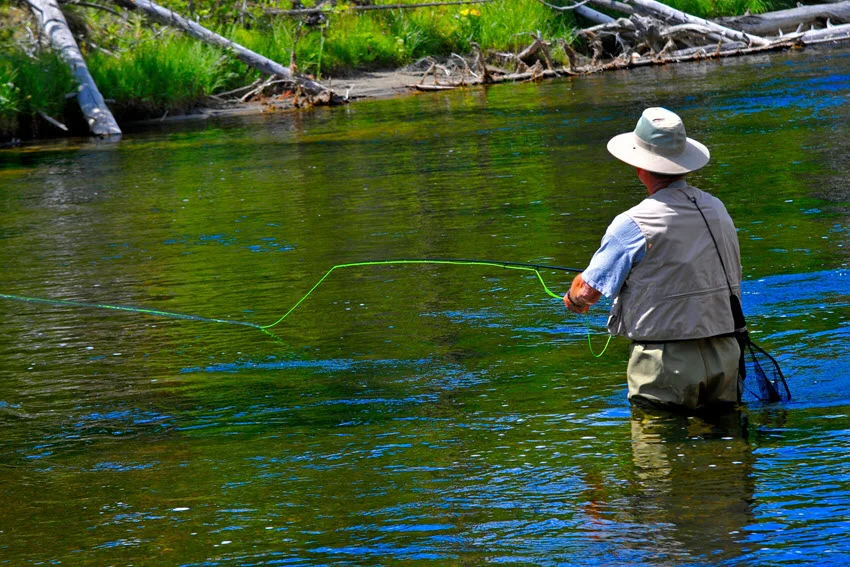
The term "wading" comes from the English word "wade," which means to walk through water. This implies that Wading is looking for shallower water, that is, areas closer to the coast with a stable bottom, allowing you to wade stably.
Before entering the water, it is important to put on waterproof boots or waders, and if you are in areas with colder waters, wear a suitable suit to protect against the cold. Apart from that, you don't need any special equipment, but classic gear, which you choose according to your fishing preferences.
Anglers move slowly so as not to stir up the water and then target the fish using different casting and guiding techniques. What is complex and adds to the excitement is that you have to follow the depth, water currents, and bottom structure. The advantage is that wading enables direct contact with the environment, exploration of new places, and access to hard-to-reach fish species.
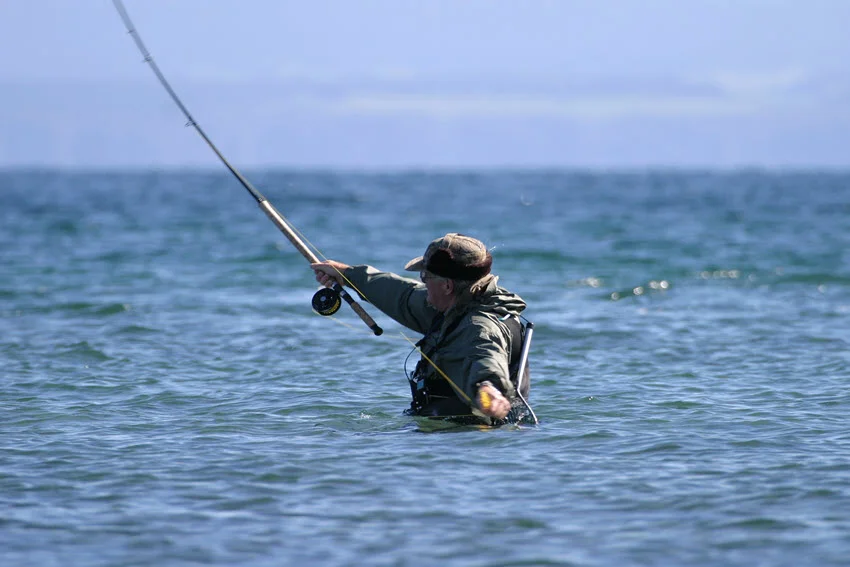
Wading fishing offers several amazing advantages, making it a complex and wonderful fishing technique. Primarily, it allows you to get closer to fish that are in areas that are difficult to reach from shore. This means that wading is an ambush-like technique that enables you to explore new places inaccessible to traditional fishing methods.
In addition, this technique allows greater control and precision when throwing baits because you are closer to the water and can adjust it better. However, it can also be tiring, difficult, and dangerous, as you have to move slowly and quietly through the water, reducing the turbulence that can distract the fish.
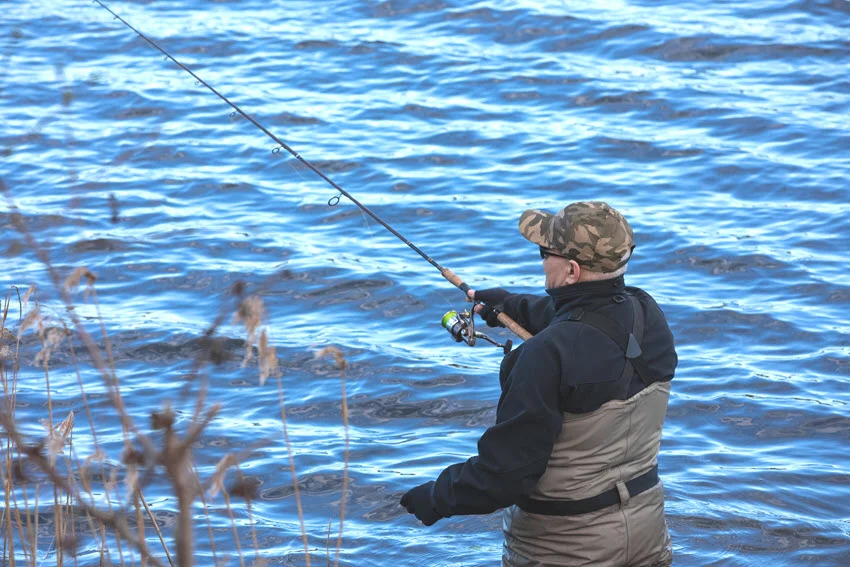
Wading is for shallow waters such as coastal zones, lakes, or shoals and for anglers who like to explore the fish that are often hiding close to the shore. It allows you to examine parts of the coast and the bottom of the water that are otherwise inaccessible and also gives you the feeling that you have almost completely synchronized with the water and the habitat of the fish you are hunting.
If the weather is optimal, you can wade in every season, but you must always be aware of cold water or dangerous underwater structures.
Wading is especially effective in calm waters with minimal currents, as it allows you to move slowly and not stir up the water too much, even when fish activity is reduced in deeper waters. Although it requires the purchase of deep boots, wading is quite an affordable and financially advantageous technique.
In addition to the catch, for those who like to be in the water, it provides a fishing experience from a different dimension that can significantly improve your fishing adventure.
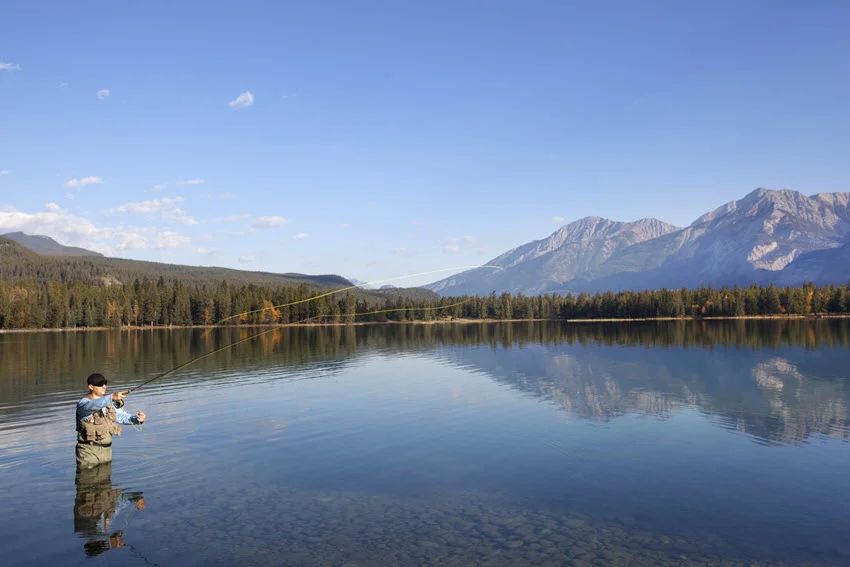
Fish often congregate in areas where anglers wade. These are primarily shallow waters with complex structures, such as submerged rocks, plants, and sandbanks, which provide shelter and food sources for fish. Thanks to the richness of the fish food, such as insects, crustaceans, and smaller fish, these are all hotspots for fish of various types and sizes.
For certain fish species, temperatures in shallow waters can vary significantly, so fish often seek optimal conditions in these areas. Finally, what drives fish to shallower waters and wading zones is that they can run away from predators and use shallow waters as cover. Given that wading can stir up mud and reveal hidden food sources, fish are additionally attracted.
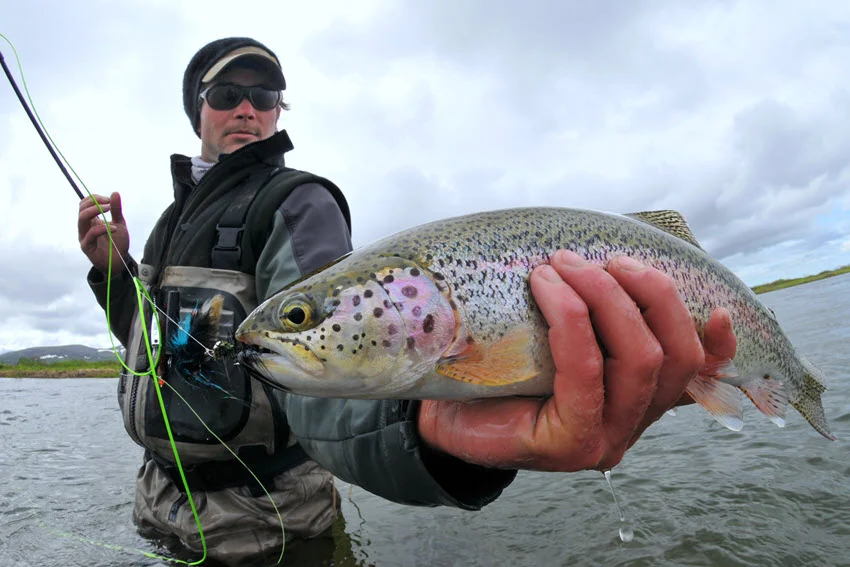
They are mostly species that live near the coast, although depending on whether you are fishing in freshwater or saltwater areas, you can often attract fish from deeper and further away water.
Bass (Largemouth and Smallmouth): These are popular fish, and you will often find them in shallow, weedy areas. They are known for reacting aggressively to different baits and lures that anglers use while wading.
Trout: All types of Trout thrive in cooler, shallow streams and rivers. With the help of wading, anglers can reach ideal feeding spots and hidden pools.
Redfish: Redfish are a kind of superstar in coastal and estuarine areas and are plentiful, making them popular with waders.
Snook: Snook swims primarily in shallow, mangrove areas where wading provides access to prime fishing spots.
Panfish: There are many species of this fish, and almost all inhabit shallow lakes and ponds, where anglers can quickly reach their feeding grounds under the water grasses.
Bonefish: Their primary habitats are shallow, sandy areas and shallower waters in tropical regions.
Permit: Also, a regular fish in tropical shallows. In addition, it is fast and agile, which adds another dose of excitement.
Wading is an ambush technique, and no matter what species you are hunting, considering that you are moving in the water, it is important that you control your body, make every move slow, and also pay attention to breathing as much as possible. Every move must be in sync with the typical rhythm of the water you are fishing in.
Like most standard fishing techniques, wading relies on rods, baits, and lures. Given that you are walking through water and that, in addition to fishing, you have to watch every step, all gear must suit you, your strength, experience, and the environment in which you are fishing.
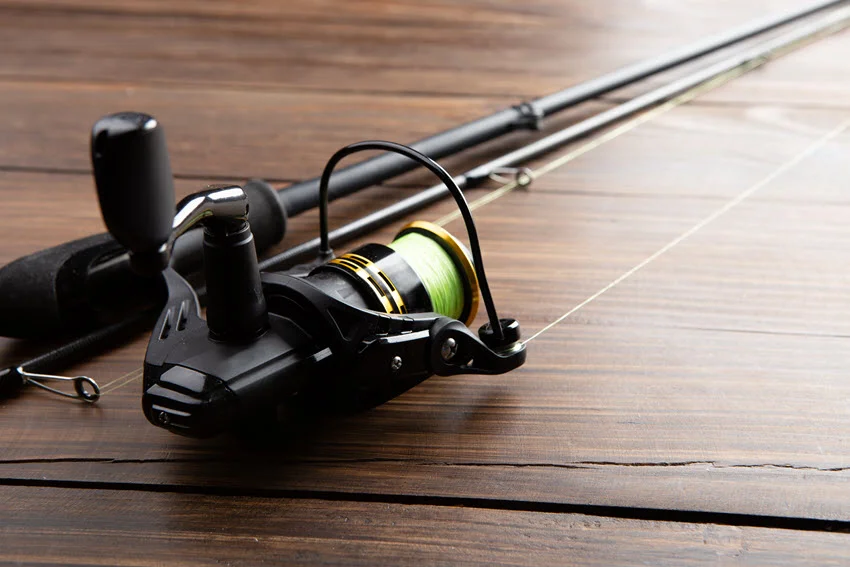
For wading, the best option is to choose shorter, lighter, and more durable materials for rods, which will provide you with the necessary precision in casting and will not tire you or disturb your balance and equilibrium in the water.
Fly Rods: Very light and flexible, designed for casting with high precision. Lengths of 8 to 10 feet allow for controlled and precise targeting of lures and are excellent for wading fishing, as they enable detailed exploration of hard-to-reach areas.
Spinning Rods: Classic, standard rods, ideal for various and natural lures. They offer good range and control in shallow water and support a variety of baits and techniques.
Baitcasting Rods: These rods are solid, allow for accurate casting, and are available in the 6 to 8-foot range, making them suitable for fishing in areas with many obstacles. In wading, choose a rod with a higher load capacity and a robust construction for better control of heavy lures.
Trout Rods: Although specialized for this type of fish and are usually very light and sensitive, you can also fish other species with them because they are exact and light. They can be chosen in lengths from 7 to 9 feet.
Take care of your rods; clean and maintain them regularly. They will serve you longer and also save you more.
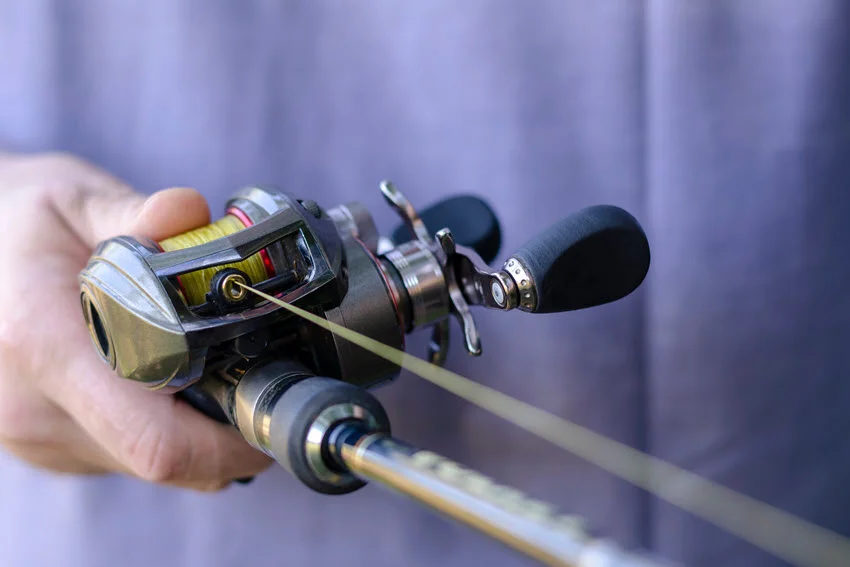
When choosing a wading reel, consider the type of fish you are targeting and the water conditions. Use mounts that allow for easy weight adjustment, as well as high-quality couplings, clips, and hooks.
Fly Reels: This reel is specialized for fly fishing and is designed to support fly baits' long-lasting and precise casting. Its simple design ensures smooth unwinding of the string. For wading fishing, rods should be light and resistant to corrosion due to constant contact with water.
Spinning Reels: Versatile and famous for their simplicity and characteristics for long casts and smooth line unwinding. Choose reels with a robust braking system because they are well-balanced for perfect control when fishing in shallow waters.
Baitcasting Reels: Their focus is on ensuring precision. They also provide excellent control and power when casting heavy lures and larger lures, which is useful for wading in challenging conditions.
For wading conditions, all reels must be corrosion-resistant and made of aluminum or composite materials to withstand constant contact with water. They must also have rolls, which are a precise and smooth braking system that enables fine adjustments.
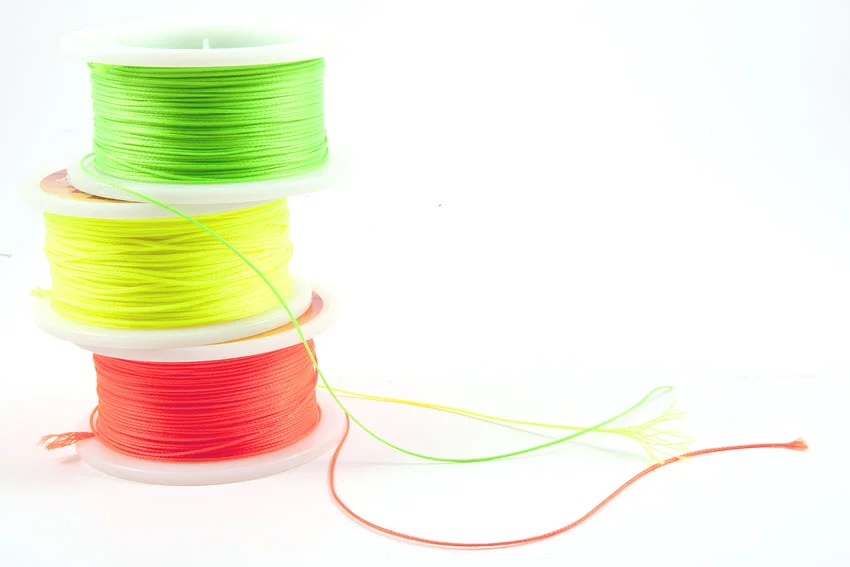
Which line you choose for wading depends mostly on the conditions and water you are fishing in. Are the waters cloudy or clear, fresh or salty, and are there obstacles and vegetation that can damage them?
Monofilament Lines: These lines are popular because they are flexible, cheap, and have a good absorption capacity. You can choose them in a range of different thicknesses for the type of fish you are targeting and the weight of the baits you are using.
Fluorocarbon Lines: This type is less visible in the water and has excellent wear resistance. Due to their lower reflectivity, they are ideal for fishing in clear waters where visibility is key. They are not so visible in water, are more resistant to wear, and have good UV resistance.
Braided Lines: They provide exceptional strength and sensitivity. They are thinner than monofilament and fluorocarbon lines for the same strength, which means more powerful casting and more control. Excellent for fishing where great power and sensitivity is required.
Remember to adjust the length and weight of the line according to your rod and the type of bait you are using. For optimal performance, the line must be compatible with your reel and rod.
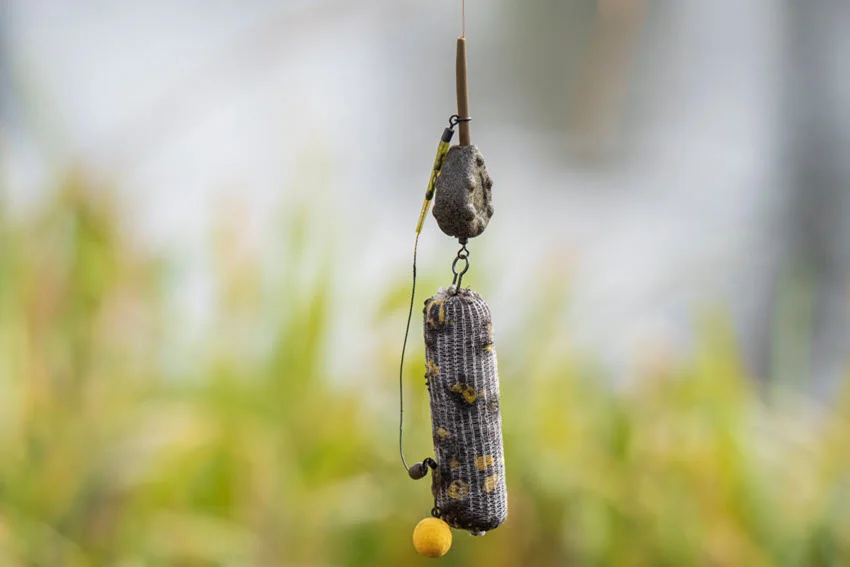
Ensuring optimal performance in wading fishing also means an almost perfect equipment fit. The type of rig you choose will provide sufficient stability to the entire setup, being neither too heavy nor too light.
Fly Rigs: Fly rigs are intended for fly fishing and optimizing the throwing of fly baits to achieve the desired presentation. They can be simple or complex, depending on the type of fish and fishing conditions. It is important to adjust the length and weight of the lead according to the kind of fish and the water conditions.
Spinning Rigs: These rigs are versatile and allow the use of different baits. A spinning rig consists of the main line, leader, and selected bait, allowing easy adjustment of the weight and type of bait. Use mounts that enable fast bait change and weight adjustment for different conditions and types of fish. Also, choose quality couplings and clips for secure attachment of lures.
Baitcasting Rigs: If you use mostly heavier baits, baitcasting rigs will provide sharper, high-focus precision. In wading fishing, baitcasting rigs also offer better control and power when fishing in challenging conditions.
Trout Rigs: They specialize in Trout fishing and usually include a light main line, a fluorocarbon leader and a suitable bait. Such mounting construction helps maintain fine control and natural appearance of the lure in the water.
It is essential to test the assemblies regularly, and those damaged or worn components should be replaced immediately.
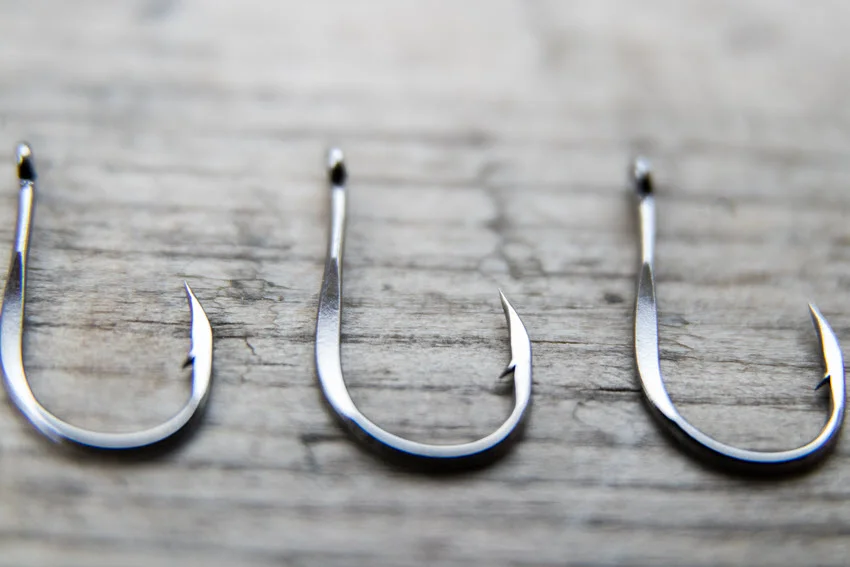
In wading fishing, choosing the right hooks depends on what the fish is, where you are catching it, and whether you plan to release it. In any case, always having as many different hooks as possible is a good option.
J Hook: This is a classic hook with a curved tip resembling the letter "J." It has a long, curved neck with a sharp tip and ensures the penetration of the fish's mouth. They come in different sizes, so you can choose and adapt them to fish size.
Circle Hook: This type has a curved, almost circular shape to catch the fish securely by the corners of the mouth. It reduces the chances of the fish being hooked in the throat. It is excellent for fishing with natural baits, especially in salt water.
Treble Hook: Characterised by three sharp points arranged around the central frame for greater chances of catching fish. A good option is to use them with lures such as crankbaits and spinnerbaits. Be careful when handling; these hooks can easily get caught in the net or your clothes.
Drop Shot Hook: This hook is designed for the drop shot technique, where the bait hangs above the lead on the bottom. It has a short neck and a sharp tip, which helps to achieve a precise presentation.
Octopus Hook: It has a short neck and wide opening and is best suited primarily for fishing with natural baits. It is stable and robust, ideal for different types of lures and techniques.
Make sure the bait or lure is appropriately seated on the hook. Otherwise, it can reduce efficiency and increase the chances that the fish will escape or take the bait and swim away.
The basic rule you should follow when preparing a collection of baits for wading action is to match the food habits of the fish. Whether they are live or artificial, in salt or freshwater, it is essential that they intrigue the fish.
Wading in saltwater is more manageable than freshwater because you can judge the water's terrain and depth more efficiently. Even if you are targeting a specific type of fish, choose a bait that matches the habits and behavior of that species. And if not, keep off generic baits, like small fish or crabs.
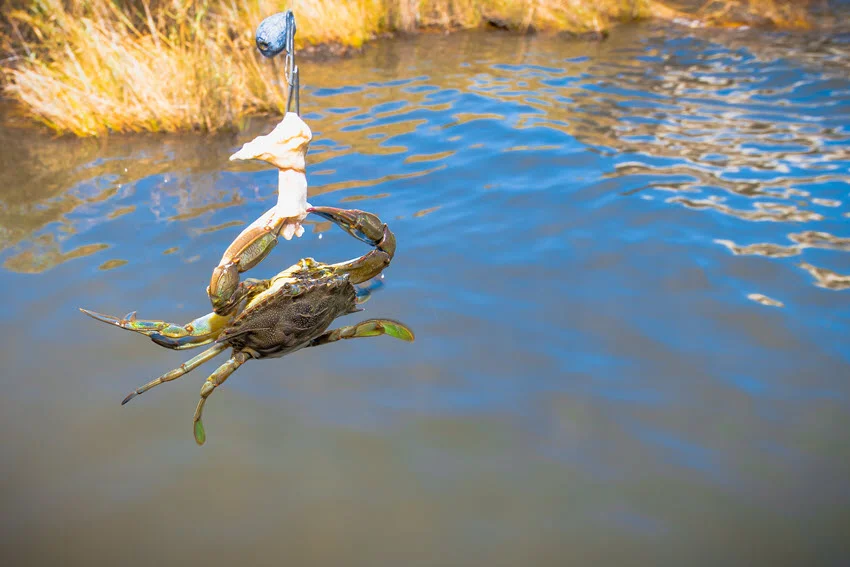
Live baits are the leading food and primary attraction for fish. It will be difficult to resist the sounds, movements, and smells if you present them well.
Small Crabs: An excellent choice for hunting Redfish and Flounder. Crabs move naturally and have a strong smell that attracts fish that are always looking for easy prey.
Sea Worms: You can use them for any species, as they are one of the generic baits and almost always easy prey for all fish.
Live Fish: This group includes small fish such as Menhaden or Pilchard and is a fundamental part of fishing tackle for Snook and Tarpon.
Check the condition of live baits regularly and replace them when they become less active. Changes in conditions such as tides and weather can also affect the effectiveness of the presentation.
![]()
Artificial baits offer various options, can adapt to different conditions in the water, and can be experimented with.
Lures: In saltwater, the focus is on spinning and wobbling lures, which can be very effective for predators such as Redfish and Snook. They are excellent for fast and dynamic fishing action.
Silicon Baits: Multifunctional and can Imitate different prey and are often used with jig heads for better presentation.
Floating Baits: Used for surface fishing and are ideal for species that are intrigued by visual displays on the surface of the water.
It is vital to regularly check artificial baits for damage or deformation and not to leave them behind in the water.
Since freshwater includes various bodies of water with many unusual structures, consider changes in the water, such as level and velocity, and adjust your approach according to the conditions on the ground.
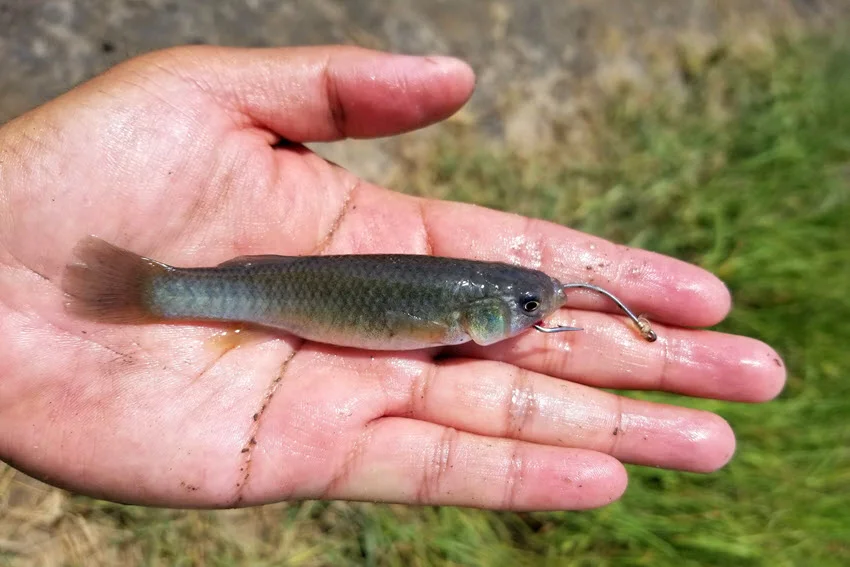
Live bait is very effective due to its naturalness and attractiveness to fish. In freshwater, the most commonly used live baits include:
Worms: A typical and classic bait for hunting various fish in freshwater. They are versatile and move easily in the water, which makes them attractive to many species.
River Crayfish and Clams: Ideal for fishing species such as Bass and Pike, and are often used in marshy and shallow water, while Clams will do wonders in stagnant water.
Minnows: They are used to hunt various species but are primarily there to attract larger predators such as Pike and Bass. They provide a natural look and movement that attracts predators.
In freshwater, fish often adjust their behavior depending on the season. So, you won't find most species in the same place in spring and fall. Follow the seasonal changes and adjust the bait selection accordingly.
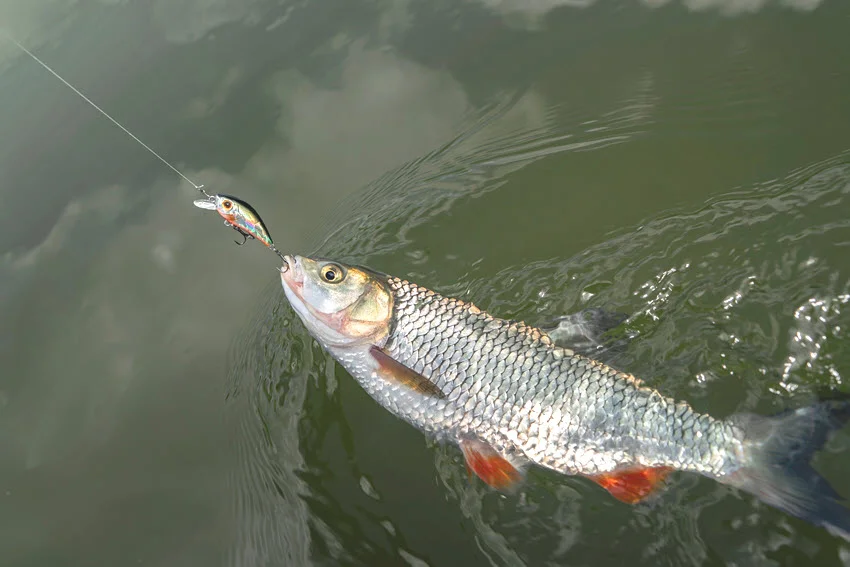
The choice of artificial baits can elicit differing views, and here are some typical artificial baits for freshwater.
Spinnerbaits and Crankbaits: Classic lures used in a variety of freshwater scenarios, can imitate fish and other prey. They are especially effective in fast, dynamic waters.
Silicon Lures: They can be found in all the typical live bait shapes, including worms, crabs, and small fish, and are excellent for Panfish and Bass.
Buzzbait: A more advanced option used for hunting large and aggressive fish. They are recommended for surface fishing because they create a frantic commotion, similar to the noise of frightened or upset fish.
Artificial baits should also be in good condition to ensure a quality imitation. If they break or are damaged, replace them with new ones.
The primary conditions that any location for wading should meet are that water is shallow, so you can wade so deep that you can move freely, and water pressure or depth does not affect throwing off the rod while being safe at the same time.

It is the favorite and most common choice of wading anglers, primarily because of the dynamic currents and various types of fish. Rivers and streams vary from fast mountain types to slower, meandering rivers. You can find Trout, Bass, Pike, and Panfish here. Explore the terrain slowly because the changing currents and depths can be unpredictable.
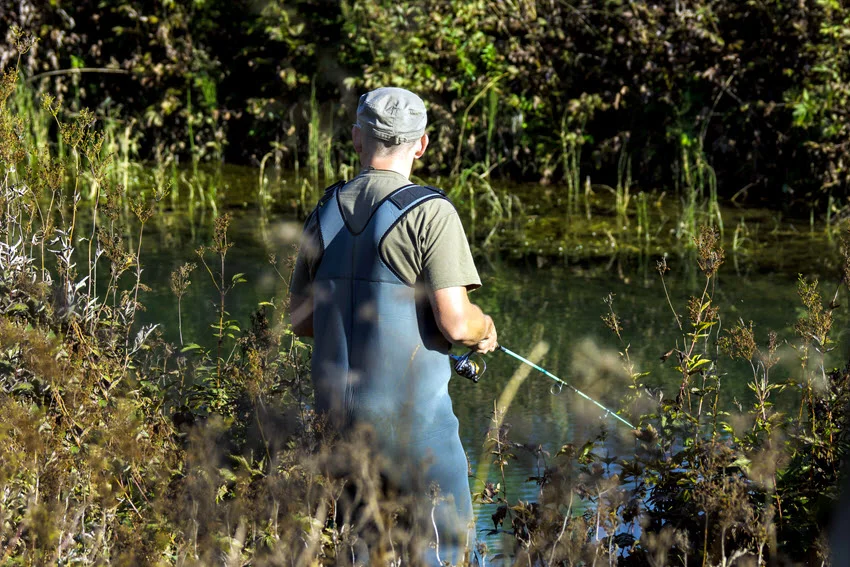
Lakes and bars are excellent locations for beginners because they offer accessible shallows and flats. They vary in size and surface, from small ponds to medium-sized lakes with different depths. Some are crystal clear, others a little less so, and in most of them, species such as Bass, Sunfish, Eels, and Crappies can usually be found. Remember to be careful, especially in moody and murky spots.
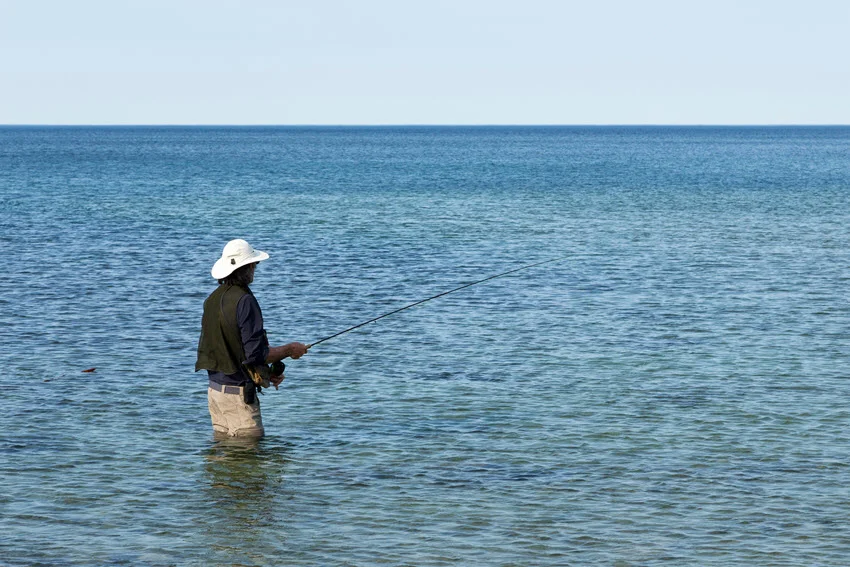
Coastal wading involves fishing in shallow salt water, i.e., estuaries, tidal flats, and nearshore places close to bridges, piers, and other areas with submerged pillars and structures where fish usually come during migrations or feeding hours. With some luck, you will catch fish such as Redfish, Perch, Flounder, or Snook here.

Shallow sea plains and wetlands are unusual locations with water that is often a mixture of salty and fresh water. Often, there is slippery grass or mud, which calls for extra caution when wading. Such areas are rich in species such as Bonefish, Tarpon, and various types of Bass. Due to the abundance of fish, they are a favorite for wading.
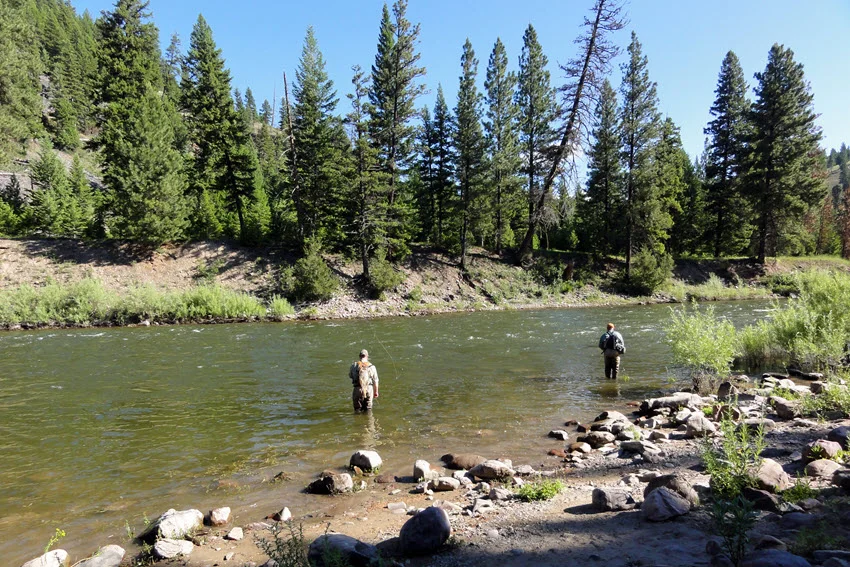
Exciting places, somewhat unique, which, due to the constant low temperature and healthy, pure water, are home to various types of Trout. If you plan to fish for extended hours, you must have cold isolation boots since these waters are pretty chilly, even in summer. In addition, it is an absolute pleasure to fish in these beautiful places.
When you go wading, you can combine several techniques; most of them rely on fly fishing, but in general, you can do whatever you have enough skill to perform. You can experiment and explore, but just pay attention to whether you are fully adapted to different fish and water conditions. Otherwise, the catch could be missed.
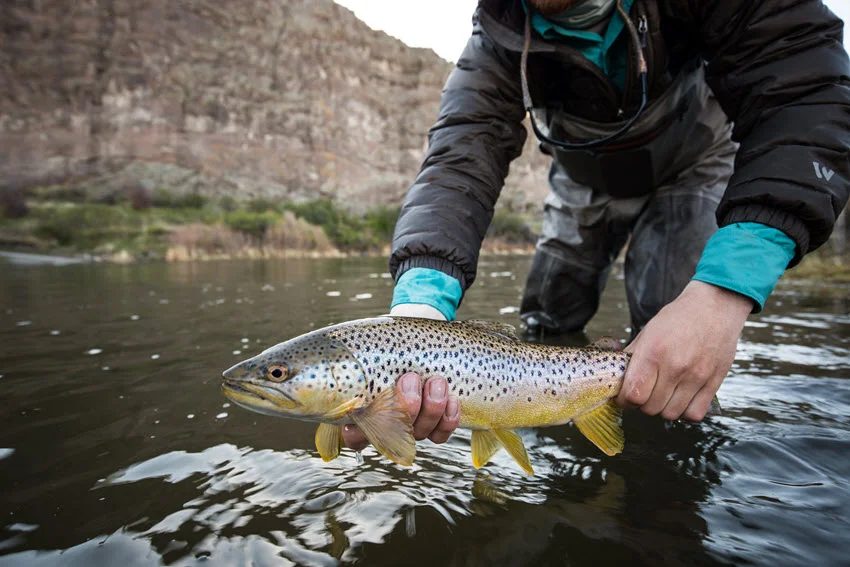
This strategy is based on nymphs, artificial insect larvae, thrown into the water and allowed to sink. Then, they begin to move following the water current and imitate the natural larvae that the fish feed on. The best option is to throw them in the hollows and near the stones where the fish often hunt. For this technique, choose a particularly sensitive line, such as fluorocarbon.
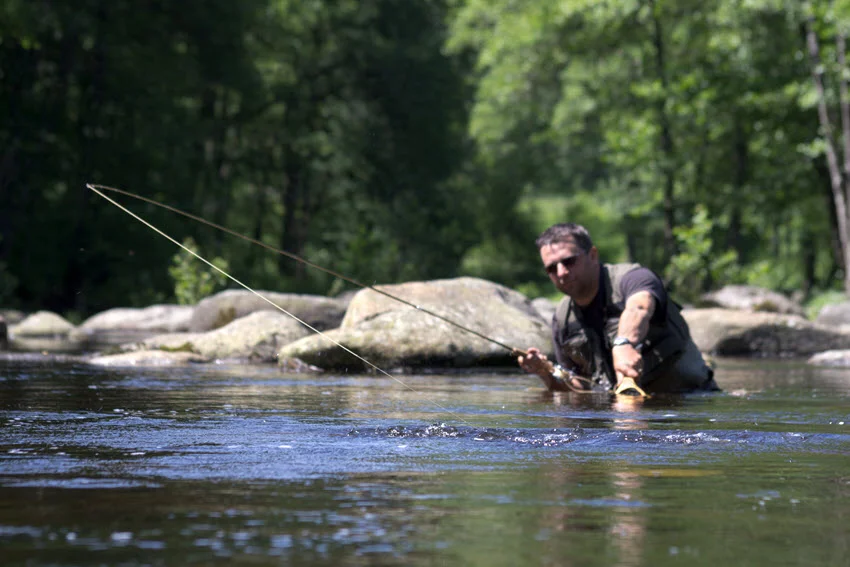
The fly fishing technique involves dry flies swimming on the water's surface and imitating adult insects. The goal is to get the fish to the surface and catch them. The technique is used where fish actively fish on the surface, such as stands and along the coast. It is essential to adjust the hovering technique, as the size and color of the insects present should be adjusted. Make sure that the lines are as visible as possible.
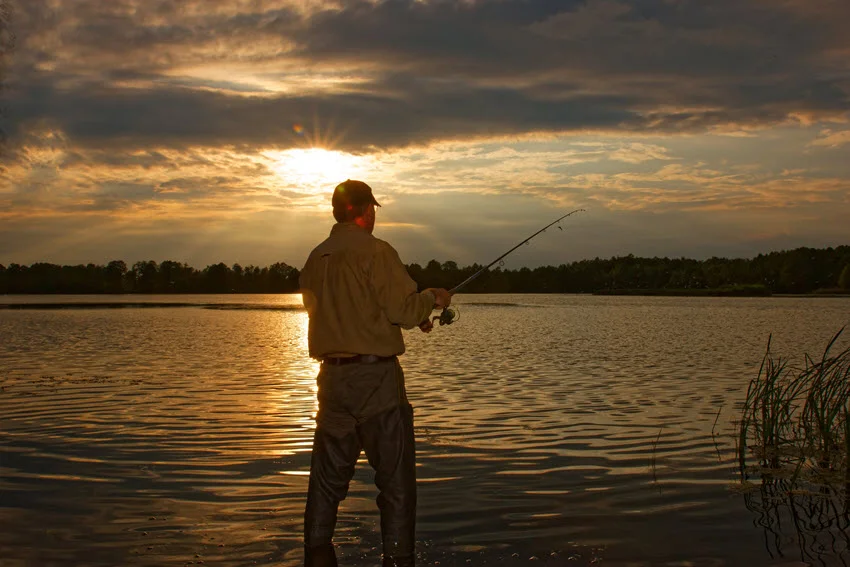
In this strategy, baits that mimic fish or other prey, such as insects, are used. This is how wading anglers mainly aim for this Pike and Bass. Lines are cast into faster currents or near objects such as trees and rocks, then pulled in quick motions, or the rhythm is varied from stopping occasionally. Use braided lines, allowing for more control and power, while experimenting with withdrawal speed can improve results.
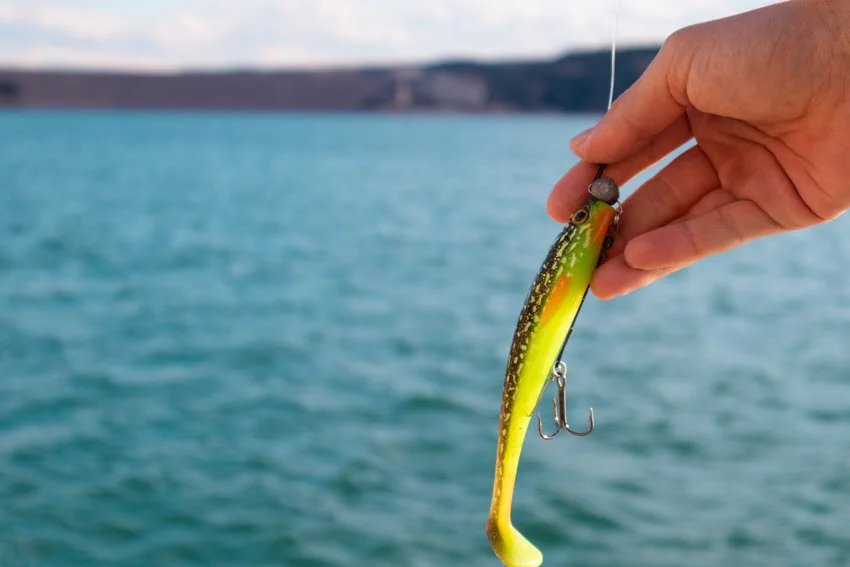
Spin fishing relies on specially designed baits, spinnerbaits, or silicone ones, thrown in the shallows or near objects where fish are hiding. The baits are manipulated with different techniques and rhythms, best with the use of spinning rods, which are ideal for this technique. Spinnerbaits enable better adaptation to different conditions and a significantly better presentation.
And there you have it, your ultimate guide to wading! You can't deny the allure and excitement with a touch of self-deprecation. But primarily, take care of safety, and in addition to the catch, try to enjoy the very process of wading and entering the fish environment!
If you're a beginner, your adventure is just beginning. If you've tried wade fishing in different places, share your tips, stories, questions, and suggestions with us! Leave a comment below, as we always look forward to chatting with you!

The expert copywriters at Anglers Booking have meticulously crafted this article. Our dedicated team of writers provides valuable insights and information to enhance your angling experience.
Embark on unforgettable fishing adventures with us at Anglers Booking.
book your charterOctober 17, 2025
October 15, 2025
October 10, 2025
October 11, 2025
October 4, 2025
September 29, 2025
September 25, 2025
September 21, 2025

You're now part of our exclusive community. Get ready for premium content and updates straight to your inbox.
close
Subscribe to our newsletter and receive a selection of cool articles every week.
Please enter a valid email address.

Be the first to know when we're back in action.
Please enter a valid email address.
Leave a Comment
Your email address will not be published. Required fields are marked *
Thank you for your comment! It has been submitted for review and will appear on the site shortly.